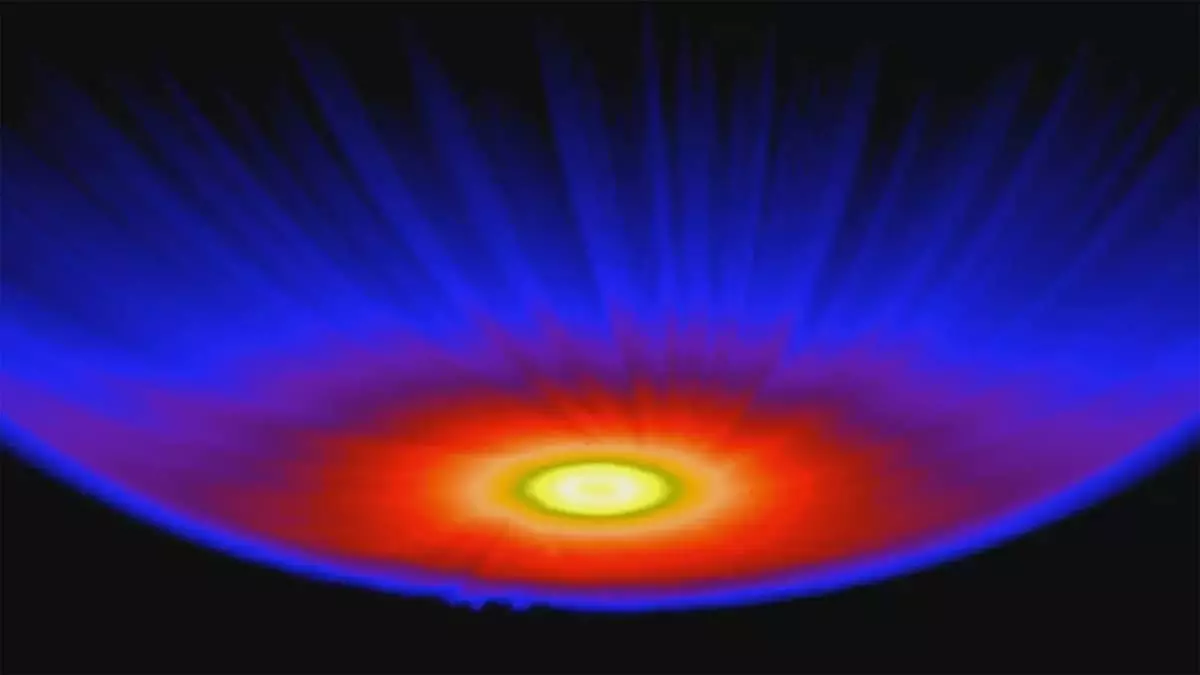Recent advancements in astronomical research have marked a pivotal moment in our understanding of stellar phenomena, particularly regarding astrospheres. An astrosphere, an ionized gas bubble generated by a star’s stellar wind, forms a protective barrier that influences the environments of surrounding planetary systems. The monumental discovery, shared at the 25 Years of Science with Chandra symposium in December 2024, underlines our ever-evolving comprehension of the life cycles of stars that resemble our Sun.
The detection of an astrosphere around the star HD 61005—familiarly known as “The Moth”—is a groundbreaking achievement. For years, it had been challenging for researchers to observe similar structures surrounding sun-like stars. This specific finding not only elucidates stellar wind dynamics but also their potential implications for habitability in extraterrestrial systems. The astrosphere around HD 61005 offers a rare glimpse into conditions conducive to forming such stellar structures.
HD 61005 is notable not just for its astrosphere but also for its physical characteristics. Approximately 100 million years old, this star is comparable in size and mass to the Sun, but its youth plays a crucial role in stellar wind intensity. These young stars generate a robust continuous stream of charged particles—stellar wind—which is vital for the formation of astrospheres. The star’s unique path, traveling through a dense interstellar gas cloud at a remarkable speed of around 10 kilometers per second, contributes to its distinctive wing-like dust disk.
NASA’s Chandra X-ray Observatory captured remarkable images showing a halo of X-rays encircling HD 61005, which extends almost 100 times further than the Sun’s heliosphere. Contrary to prevailing assumptions, this astrosphere is predominantly spherical in shape. This surprising outcome implies that the vigorous stellar wind from HD 61005 is robust enough to withstand the external interstellar pressures, thereby maintaining its protective bubble. The implications of this are profound; it suggests that the mechanisms governing magmaspheric and astrospheric formation in sun-like stars may operate similarly across various stellar systems.
Delving into the understanding of astrospheres may not only provide insights into our own solar system’s early dynamics but also presents significant implications for the search for habitable worlds. As we strive to understand habitability factors in exoplanetary systems, such studies can help us assess the protective effects of stellar winds against cosmic radiation. Consequently, analyzing stars like HD 61005 allows researchers to gauge how conducive different stellar environments are for nurturing life.
This remarkable observation of HD 61005’s astrosphere represents an essential leap forward in stellar astrophysics and our comprehension of the broader cosmos. By further investigating these phenomena, scientists can enhance our knowledge of stellar evolution and the crucial protective roles astrospheres play for planetary systems. These discoveries accentuate the intricate connections between cosmic entities, providing essential insights into the potential for life beyond our solar system.

Leave a Reply